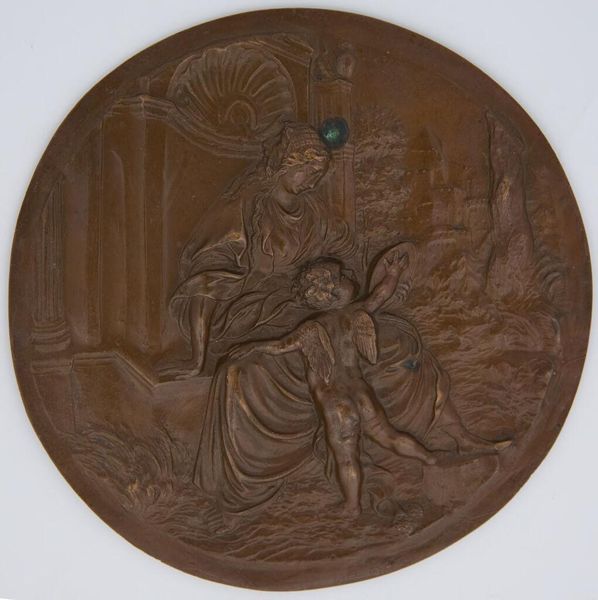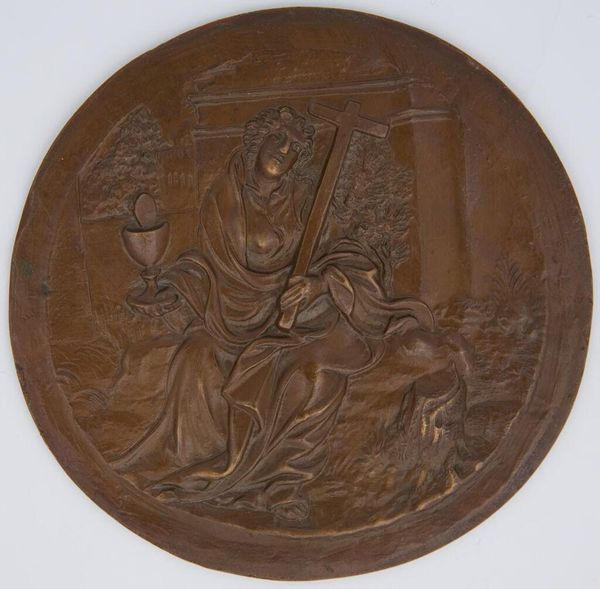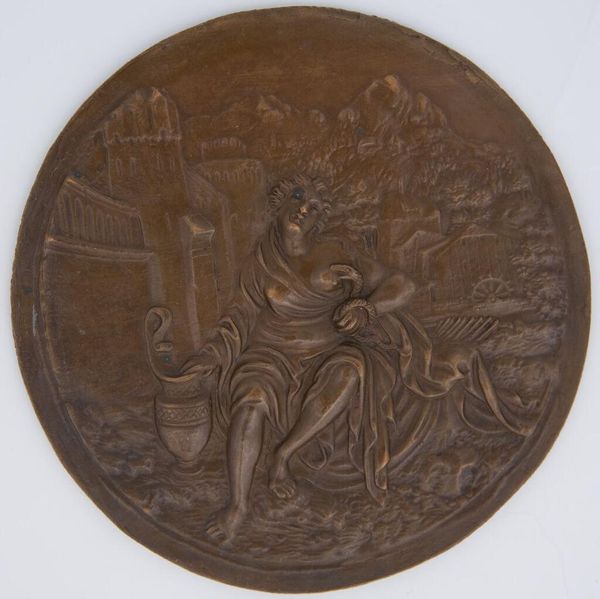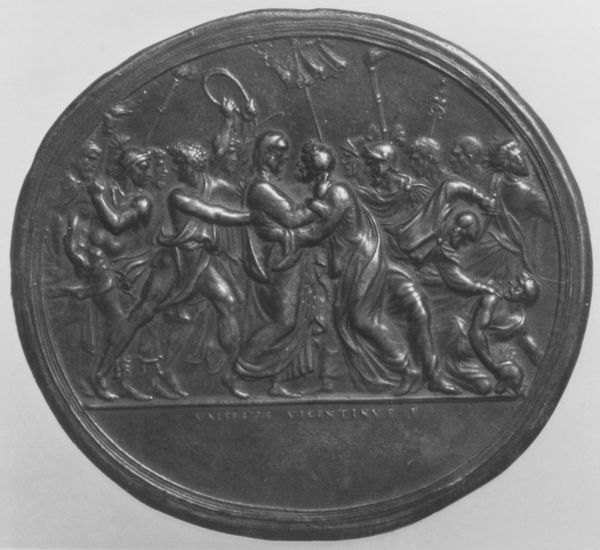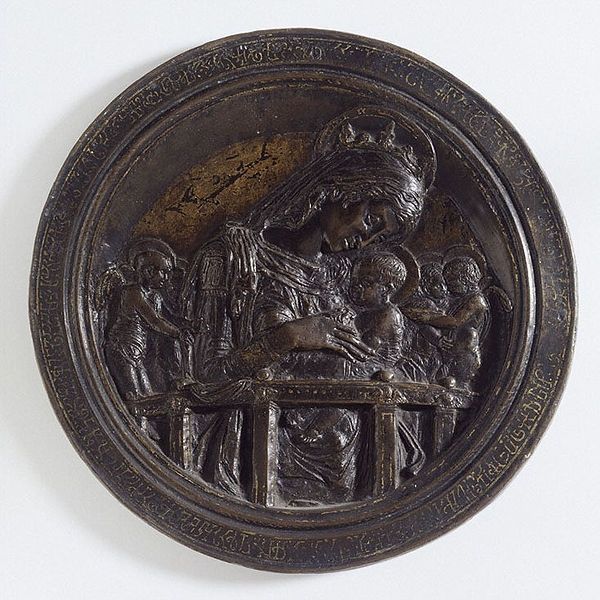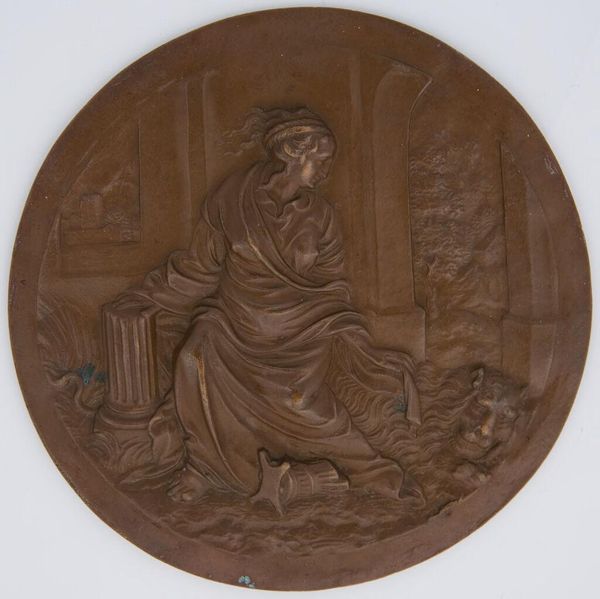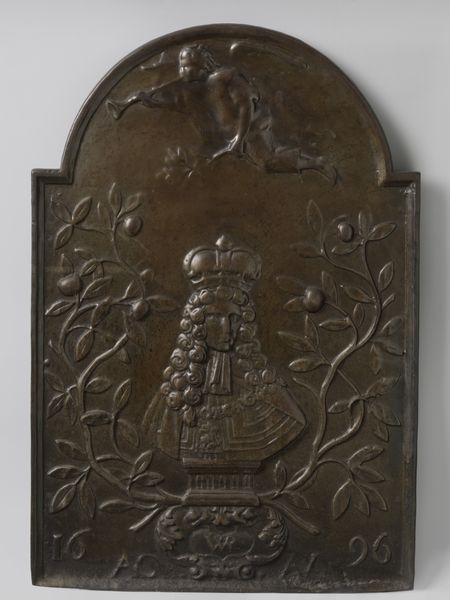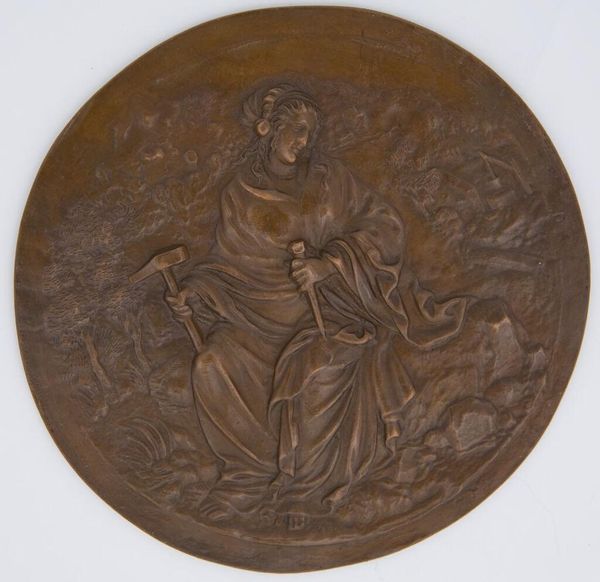
Prudence seated with an amorino and a mirror 16th century
0:00
0:00
metal, relief, sculpture
#
portrait
#
medal
#
metal
#
sculpture
#
relief
#
figuration
#
11_renaissance
#
sculpture
#
decorative-art
#
italian-renaissance
#
statue
Copyright: Public Domain
Editor: This relief is entitled "Prudence seated with an amorino and a mirror," made of metal in the 16th century by Peter Flötner. It has such a somber yet delicate mood. What can you tell me about how the formal elements contribute to that feeling? Curator: The artist masterfully balances the composition. The figures are placed asymmetrically yet remain visually stable due to the backdrop and the subtle landscape details behind them. The drapery on Prudence and the textures defining the cherubic amorino showcase a sensitivity in modelling. How do you see the light interacting with these sculpted surfaces? Editor: It seems to accentuate the dimensionality and also makes me aware of the metal's surface itself. I wonder about the circular format, though. Curator: It reinforces a sense of wholeness and containment, drawing your eye continuously around the composition. This echoes the conceptual theme, too. The pursuit of prudence necessitates introspection and circumspection, which is visualized via the figure with a mirror within this bounded space. Editor: I didn’t consider that, but the composition reflects the pursuit of prudence, as it is represented by the allegory, in a way that's not obvious! It makes the format an integral element rather than a simple constraint. Curator: Exactly. The effectiveness stems from Flötner’s handling of material and form working in concert. Every component harmonizes. Editor: Thanks, that emphasis on form gives me a better appreciation for the artistry at work. Curator: Likewise, considering your insights into affect has reminded me of the potent way visual elements stir emotions.
Comments
No comments
Be the first to comment and join the conversation on the ultimate creative platform.


